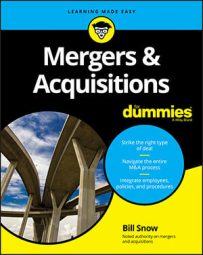Like any good salesperson, you want to keep track of your M&A calls. A customer relationship management (CRM) system (a program that keeps track of contact info) coupled with a spreadsheet makes a good system.
The spreadsheet lists the company name, the contact name of the person you’re trying to reach, and a column for “last results.” The last results column simply indicates where you are in the process with each target. When selling a company, use the following options for the last results column:
No contact: This is the initial step. By the end of the process, every company should have something other than this in the last results column.
Left message: Some people never return your call. Knowing who hasn’t called you back allows you to try a different tack in trying to contact them. But if someone hasn’t returned your call after five or eight messages, the old adage “The lack of response is the response” applies.
Sent e-mail: If making calls fails to result in a live conversation, you may decide to send an e-mail, preferably to a specific person rather than a general “info@” address.
In contact with parent: Sometimes the person you need to speak with works at the parent company, so use this designation instead of simply deleting or writing over the name of the person at the subsidiary.
In contact with subsidiary: This category is the flip side to “in contact with parent.”
In contact with broker: Use this note when a company has an M&A intermediary. This way, you have a record that you spoke with the actual company before shifting efforts to the broker (or investment banker).
Not a fit (no contact): After you begin making calls, you may discover some targets aren’t suitable fits, in most cases because the target is out of business.
Conversations: You have had a conversation with a decision-maker at the company.
Teaser sent: You have sent an email with important information to entice the decision-maker’s curiosity.
Offering document sent: When selling a company, you might typically allow access to the offering document (or deal book) from anywhere between 25 to 50 targets.
Indication of interest: After a target reviews the deal book, record how many indications of interest you get; it’s typically 5 to 15.
Management meeting: You may end up conducting five to ten meetings during the course of a sale.
Letter of intent: You want to have as many letters of intent as possible, hopefully at least five.
Purchase agreement: This entry is the ultimate goal! One lucky target with whom you’re hammering out a purchase agreement gets this designation.
At a glance you will be able to tell where you are with each target. You can also very easily add up how many teasers you’ve sent, how many books are being reviewed, and how many targets are stuck at the left-message step.
Keep a similar spreadsheet when buying companies, with a few minor differences. For example, the teaser sent and offering document sent categories become teaser reviewed and offering document reviewed.

